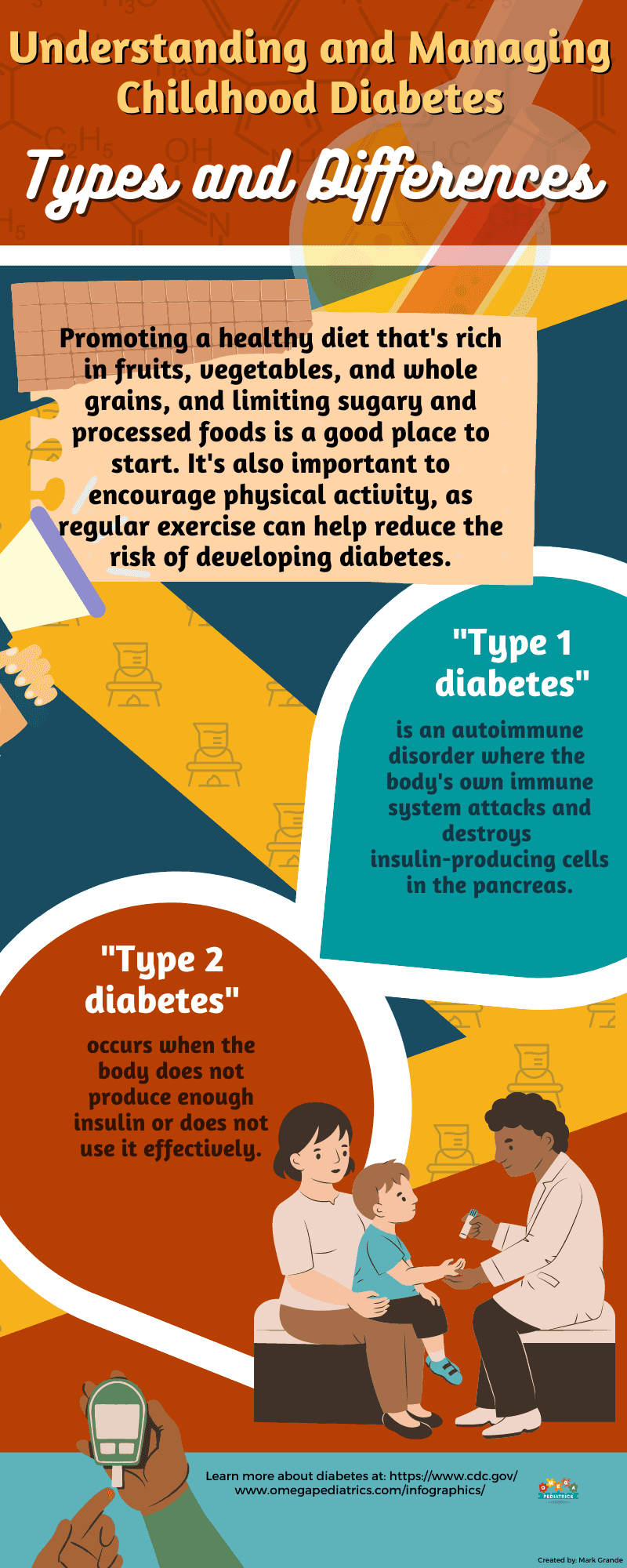
Diabetes is a chronic condition that affects millions of people worldwide, including children. Managing childhood diabetes requires a comprehensive approach that involves understanding the different types of diabetes, promoting a healthy lifestyle, and implementing appropriate prevention and management strategies. Here is an in-depth look at childhood diabetes, its types, and how to effectively manage it:
Types and Differences:
- Type 1 diabetes:
Type 1 diabetes is an autoimmune disorder that typically develops during childhood or adolescence. In this form of diabetes, the body’s immune system mistakenly attacks and destroys the insulin-producing cells in the pancreas. As a result, the body cannot produce insulin, a hormone responsible for regulating blood sugar levels. Children with type 1 diabetes require insulin injections or the use of an insulin pump to manage their blood sugar levels.
- Type 2 diabetes:
Type 2 diabetes occurs when the body either does not produce enough insulin or cannot effectively use the insulin it produces. This type of diabetes was traditionally seen in older adults, but it is increasingly becoming prevalent in children, largely due to lifestyle factors. Type 2 diabetes in children is often associated with obesity and sedentary behavior. Initially, lifestyle modifications such as healthy eating and regular physical activity may be recommended, but medication or insulin therapy may be necessary in some cases.
Prevention and Management:
Preventing Childhood Diabetes:
- Promoting a healthy diet: Encouraging a balanced diet that is rich in fruits, vegetables, and whole grains, while limiting sugary and processed foods, is a good place to start. This helps maintain a healthy weight and prevents excessive blood sugar spikes.
- Regular physical activity: Encouraging children to engage in regular exercise and physical activity not only helps maintain a healthy weight but also improves insulin sensitivity, reducing the risk of developing diabetes. Physical activity can include structured sports, active play, and family activities.
Managing Childhood Diabetes:
- Blood sugar monitoring: Regular monitoring of blood sugar levels using a glucose meter helps track how well the body is managing blood sugar. This information guides treatment decisions, including insulin dosage adjustments and dietary modifications.
- Insulin therapy: Children with type 1 diabetes require insulin injections or the use of an insulin pump to regulate their blood sugar levels. Insulin therapy is tailored to individual needs and may involve multiple daily injections or continuous insulin infusion through a pump.
- Medication management: In some cases of type 2 diabetes, medication may be necessary to help control blood sugar levels. Medications prescribed to children with type 2 diabetes may include oral medications or, in rare cases, insulin injections.
- Healthy lifestyle: Promoting a healthy lifestyle is vital in managing childhood diabetes. This includes maintaining a balanced diet, engaging in regular physical activity, and practicing portion control. Collaboration with healthcare providers and registered dietitians can help develop a personalized meal plan and lifestyle recommendations.
- Blood sugar control and monitoring: Regular check-ups with healthcare professionals are essential to monitor blood sugar control, adjust treatment plans if necessary, and identify any potential complications early on.
- Education and support: Providing children and their families with education and support regarding diabetes self-management is crucial. This includes understanding how to monitor blood sugar levels, administer insulin, and recognize signs of high or low blood sugar. Diabetes support groups and educational resources can also provide valuable information and emotional support.
While there is currently no cure for diabetes, proper management allows children with diabetes to lead healthy and fulfilling lives. It is important to work closely with healthcare professionals, including pediatric endocrinologists, nurses, dietitians, and diabetes educators, to develop an individualized care plan and provide ongoing support.
By understanding the types of childhood diabetes, promoting a healthy lifestyle, implementing prevention strategies, and effectively managing the condition, we can help children with diabetes live well and thrive. Ongoing research and advancements in diabetes management continue to improve outcomes and quality of life for children with this chronic condition.



